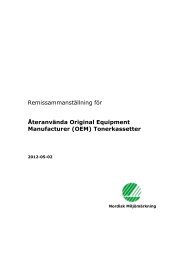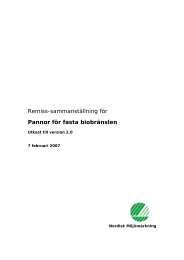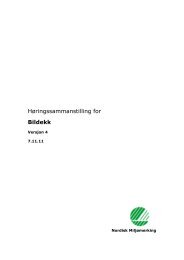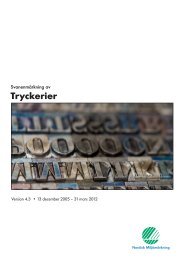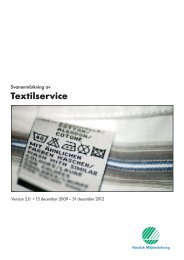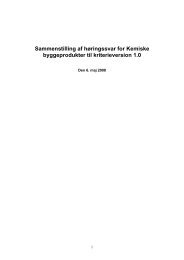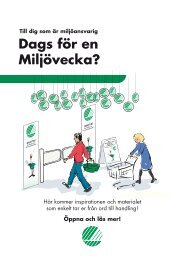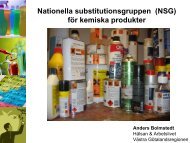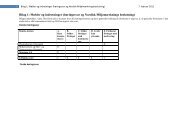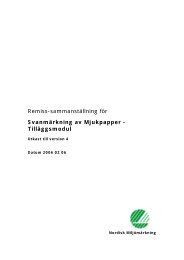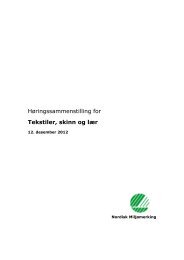Småhus, flerbostadshus och förskolebyggnader - Svanen
Småhus, flerbostadshus och förskolebyggnader - Svanen
Småhus, flerbostadshus och förskolebyggnader - Svanen
Create successful ePaper yourself
Turn your PDF publications into a flip-book with our unique Google optimized e-Paper software.
Nordisk Miljømerking<br />
Hus, leiligheter og barnehager 089/versjon 2<br />
Høringssammenstilling, oppdatert 10. august 2010<br />
a) Recycling of metals has environmental, economic and social value. Consequently, and<br />
for many years, metals from end-of-life products are widely recycled at high rates.<br />
b) Recycled metal is readily sold on the market. The constraint to greater levels of metal<br />
recycling is the availability of feedstock material.<br />
c) Metals are characterized by metallic bonding that provides distinct structures and<br />
properties. As this type of bonding is not affected by melting, metals can be, and<br />
are, recycled over and over again.<br />
d) Material grade is determined by conformity to established specifications. The origin of<br />
metal (whether primary or recycled) in a specific lot of material is driven by availability<br />
and economics.<br />
e) Metal may be lost during product use (e.g., via corrosion or wear), and some material<br />
may not be economically recoverable at end-of-life due to material dispersion or<br />
difficulties in separating components.<br />
f) Since there is growth in the demand for metals and since metal products often have a<br />
long service life, there is a limited supply of used metals available for recycling into<br />
new products. Primary metal production fills the gap between the availability of<br />
secondary material and total demand.<br />
Comparison of approaches for modeling recycling Two approaches for assessing the<br />
benefits of recycling are commonly used: the 'recycled content' approach and the<br />
'end-of-life' recycling approach. Their perspectives and purposes are different.<br />
a) Recycled content approach<br />
The recycled content approach uses a metric that looks back to where material feedstock<br />
was sourced, and provides a measure of waste diversion. This approach is based on a<br />
waste management perspective, where the general aim is to promote a market for<br />
recycled materials that is otherwise limited, uneconomic or immature.<br />
The recycled content approach assumes that the use of recycled material is a good<br />
indicator of environmental benefit. However, the metric uses statistical information on<br />
material flows and is not based on an actual assessment of environmental performance.<br />
For example, if product durability is improved, less scrap material will be available in the<br />
short term. This, in turn, is reducing the possibility of a high recycled content in the short<br />
term.<br />
The recycled content approach may be a useful metric for material that would otherwise<br />
be incinerated or landfilled as waste (assuming that these waste management treatment<br />
processes would result in higher environmental impacts than the materials recycling),<br />
which can be diverted to recycling and reuse. Importantly, this is not the case for metals<br />
− as discussed above, metal recycling is economical and the recycled metal market is<br />
mature. Unfortunately, application of the recycled content approach may create market<br />
distortions and environmental inefficiencies. If a designer specifies high recycled content<br />
in a wellmeaning effort to reduce environmental impacts, it may stimulate the market to<br />
direct recycled feedstock towards designated products and away from production where<br />
recycling is most economical. For metals, where there is a limited supply of recycled<br />
160 (165)



